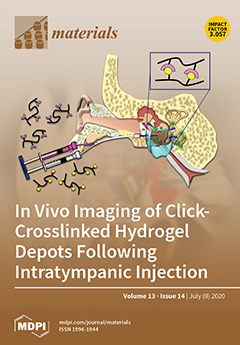Exsolved perovskites can be obtained from lanthanum ferrites, such as La
0.6Sr
0.4Fe
0.8Co
0.2O
3, as result of Ni doping and thermal treatments. Ni can be simply added to the perovskite by an incipient wetness method. Thermal
[...] Read more.
Exsolved perovskites can be obtained from lanthanum ferrites, such as La
0.6Sr
0.4Fe
0.8Co
0.2O
3, as result of Ni doping and thermal treatments. Ni can be simply added to the perovskite by an incipient wetness method. Thermal treatments that favor the exsolution process include calcination in air (e.g., 500 °C) and subsequent reduction in diluted H
2 at 800 °C. These processes allow producing a two-phase material consisting of a Ruddlesden–Popper-type structure and a solid oxide solution e.g., α-Fe
100-y-zCo
yNi
zO
x oxide. The formed electrocatalyst shows sufficient electronic conductivity under reducing environment at the Solid Oxide Fuel Cell (SOFC) anode. Outstanding catalytic properties are observed for the direct oxidation of dry fuels in SOFCs, including H
2, methane, syngas, methanol, glycerol, and propane. This anode electrocatalyst can be combined with a full density electrolyte based on Gadolinia-doped ceria or with La
0.8Sr
0.2Ga
0.8Mg
0.2O
3 (LSGM) or BaCe
0.9Y
0.1O
3-δ (BYCO) to form a complete perovskite structure-based cell. Moreover, the exsolved perovskite can be used as a coating layer or catalytic pre-layer of a conventional Ni-YSZ anode. Beside the excellent catalytic activity, this material also shows proper durability and tolerance to sulfur poisoning. Research challenges and future directions are discussed. A new approach combining an exsolved perovskite and an NiCu alloy to further enhance the fuel flexibility of the composite catalyst is also considered. In this review, the preparation methods, physicochemical characteristics, and surface properties of exsoluted fine nanoparticles encapsulated on the metal-depleted perovskite, electrochemical properties for the direct oxidation of dry fuels, and related electrooxidation mechanisms are examined and discussed.
Full article






